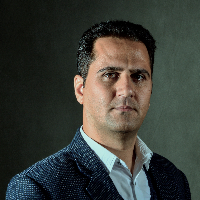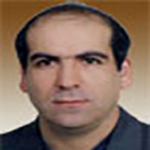An Investigation and Identify of Essence of Marouflaged canvasmural as a specific style of Islamic architectural decoration in Iran
Murals are the main, media of human culture and civilization and the place and its long history in Iranian art is clear. There are specific forms of mural paintings in some Iranian architecture that are different from other usual wall paintings in materials, methods as well as implementation techniques. Unfortunately, these mural paintings are not studied certainly until now. Therefore, further investigation is needed due to the importance of this issue.
In the scientific literature, different definitions of this kind of murals which provided examples of them pointed out: Canvas murals, Oil-on-canvas mural, Marouflage wall painting, Marouflaged canvasmural, Oil painting on canvas onto walls, Marouflaged Canvas, Textile wall hangings, Canvas painting adhered to the wall surface, The painting had been adhered to the ceiling by Marouflage, Mural painting on canvas, Used a canvas set in to the wall, Oil on maroufle canvas for mural painting, Fabric-based murals, Ceiling canvases, Painting Hung on the wall, Wall Cover, Oil on Canvas attach on wall, Oil on Canvas mounted on wall.
In Europe during the 17th century there was a movement away from painting on solid supports towards more portable painting techniques, giving rise to the easel painting tradition. Particularly in France, traditional fresco painting techniques were replaced by mural painting techniques similar to those used in easel painting. This new mural painting technique involved the use of textile supports that the artist could work on in their studio instead of on high scaffolding in large public places1. Marouflage is the term often used to describe this mural painting process, which involves attaching a large-scale painting on canvas to a solid substrate. The solid substrate is often architectural, such as a wall or ceiling. The complete canvas murals were often hung by specialized mural hangers, not the artist themselves. Experienced hangers developed techniques with adhesive properties that were able to bond, two materials which have widely varying properties, such as degree of expansion and contraction, porosity, etc. Ideally a marouflage adhesive needs the following characteristics: a viscous paste that is easy to apply, a slow to medium setting time, high initial tack and bond strength. Using a thick paste prevents dripping and unwanted mess during application. A high initial tack prevents the mural from falling during installation and slower setting times allow substantial working time so that the large murals can be properly positioned.
Regarding to importance of necessity of art understanding before conservation, it is obvious that common conservation procedures on these relics (without appropriate understanding) have an inappropriate results on authenticity and integrity of the relics. Unfortunately, there is not adequate research about technology and conservation of these relics and related fields. The aim of this research is the identification of history of development, and used materials and techniques in these historic paintings by field and literature investigations. Technological understanding of this kind of murals during the time by application of literature review and data explanation. Due to low information in Persian, European Marouflaged canvasmural has been studied more than Iranian relics. The research subject and case studies are studied in a qualitative and descriptive research method and the subject is considered with ten historical and theoretical aspects. These paintings are executed on the layer of cloth (canvas) and then installed on the wall that is known as a part of the architecture arrays. This research at the first library study is conducted and then according to the results, the field studies are carried out and finally, the data are analyzed. Knowing the number of Marouflage according to literature review, the identification of constituent layers of Marouflage according to field studies, and Understanding the differences between a common wall Paintings and Textile Marouflage in Iran, are the results of this paper. In architectural conservation in Iran there is a perspective called Iranian-Islamic whose meaning is the influence of Islamic belief and thought upon tradition of conservation architectural works during Islamic era of Iran.
In this paper, the process of formation of this type of wall painting in Iran was studied and present examples of this method in Iranian architecture are introduced and explained. Some of the architectural interior surfaces are decorated by the textile painting by Marouflaged in Ilkhanid, Safavid and Quajarperiod; funerary monuments with polygonal plan have the most decorative surfaces such as Soltanieh Dome, Sheykh Safi mausoleum, Maryam church, Golestan palace and etc. According to studies, there was technical change in manufacturing process of large wall paintings and ceiling paintings at Renaissance period. It resulted to production of new kind of murals which known as Marouflaged canvasmural. The research obtained appropriate results about production, manufacturing, historical samples and effect of technological problems on conservation of Marouflaged canvasmural.
- حق عضویت دریافتی صرف حمایت از نشریات عضو و نگهداری، تکمیل و توسعه مگیران میشود.
- پرداخت حق اشتراک و دانلود مقالات اجازه بازنشر آن در سایر رسانههای چاپی و دیجیتال را به کاربر نمیدهد.



